Long-Term Satellite Image Time-Series for Land Use/Land Cover Change Detection Using Refined Open Source Data in a Rural Region
Abstract
1. Introduction
Context and Background
2. Study Area and Data
2.1. Brief Introduction to the Study Area
2.2. Satellite Image Collection and Preprocessing
2.3. Official Portuguese Land Cover Map (COS) Data
3. Methods
3.1. Derivation of NDVI and NDWI from Landsat Imagery
3.2. Training Sample Derivation
3.3. Training Sample Refinement
3.4. Dynamic Time Warping and Time-Weighted Dynamic Time Warping Methods
3.5. Classification Accuracy Assessment
4. Results
4.1. LULC Classification and Analysis
4.2. LULC Classification Accuracy Summary
5. Discussion
5.1. The Implications of a Long-Term Landsat Time Series
5.2. The Generation of Training Samples from Official LULC Maps
5.3. The LULC Types and Temporal Phenological Signatures Diversity
5.4. The TWDTW Method for Long-Term Time-Series Classification
6. Conclusions
Author Contributions
Funding
Acknowledgments
Conflicts of Interest
References
- Hansen, M.C.; Loveland, T.R. A review of large area monitoring of land cover change using Landsat data. Remote Sens. Environ. 2012, 122, 66–74. [Google Scholar] [CrossRef]
- Wulder, M.A.; Masek, J.G.; Cohen, W.B.; Loveland, T.R.; Woodcock, C.E. Opening the archive: How free data has enabled the science and monitoring promise of Landsat. Remote Sens. Environ. 2012, 122, 2–10. [Google Scholar] [CrossRef]
- Lunetta, R.S.; Knight, J.F.; Ediriwickrema, J.; Lyon, J.G.; Worthy, L.D. Land-cover change detection using multi-temporal MODIS NDVI data. Remote Sens. Environ. 2006, 105, 142–154. [Google Scholar] [CrossRef]
- Xiao, X.; Boles, S.; Liu, J.; Zhuang, D.; Frolking, S.; Li, C.; Salas, W.; Moore, B. Mapping paddy rice agriculture in southern China using multi-temporal MODIS images. Remote Sens. Environ. 2005, 95, 480–492. [Google Scholar] [CrossRef]
- Schmidt, M.; Lucas, R.; Bunting, P.; Verbesselt, J.; Armston, J. Multi-resolution time series imagery for forest disturbance and regrowth monitoring in Queensland, Australia. Remote Sens. Environ. 2015, 158, 156–168. [Google Scholar] [CrossRef]
- Zhu, Z.; Woodcock, C.E. Continuous change detection and classification of land cover using all available Landsat data. Remote Sens. Environ. 2014, 144, 152–171. [Google Scholar] [CrossRef]
- Yan, L.; Roy, D.P. Improved time series land cover classification by missing-observation-adaptive nonlinear dimensionality reduction. Remote Sens. Environ. 2015, 158, 478–491. [Google Scholar] [CrossRef]
- Gómez, C.; White, J.C.; Wulder, M.A. Optical remotely sensed time series data for land cover classification: A review. ISPRS J. Photogramm. Remote Sens. 2016, 116, 55–72. [Google Scholar] [CrossRef]
- Khatami, R.; Mountrakis, G.; Stehman, S.V. A meta-analysis of remote sensing research on supervised pixel-based land-cover image classification processes: General guidelines for practitioners and future research. Remote Sens. Environ. 2016, 177, 89–100. [Google Scholar] [CrossRef]
- Carrão, H.; Gonçalves, P.; Caetano, M. Contribution of multispectral and multitemporal information from MODIS images to land cover classification. Remote Sens. Environ. 2008, 112, 986–997. [Google Scholar] [CrossRef]
- Rufin, P.; Müller, H.; Pflugmacher, D.; Hostert, P. Land use intensity trajectories on Amazonian pastures derived from Landsat time series. Int. J. Appl. Earth Obs. Geoinf. 2015, 41, 1–10. [Google Scholar] [CrossRef]
- Seto, K.C.; Fragkias, M. Quantifying spatiotemporal patterns of urban land-use change in four cities of China with time series landscape metrics. Landsc. Ecol. 2005, 20, 871–888. [Google Scholar] [CrossRef]
- Phiri, D.; Morgenroth, J. Developments in Landsat land cover classification methods: A review. Remote Sens. 2017, 9, 967. [Google Scholar] [CrossRef]
- Raczko, E.; Zagajewski, B. Comparison of support vector machine, random forest and neural network classifiers for tree species classification on airborne hyperspectral APEX images. Eur. J. Remote Sens. 2017, 50, 144–154. [Google Scholar] [CrossRef]
- Petitjean, F.; Inglada, J.; Gancarski, P. Satellite Image Time Series Analysis Under Time Warping. IEEE Trans. Geosci. Remote Sens. 2012, 50, 3081–3095. [Google Scholar] [CrossRef]
- Petitjean, F.; Weber, J. Efficient Satellite Image Time Series Analysis Under Time Warping. IEEE Geosci. Remote Sens. Lett. 2014, 11, 1143–1147. [Google Scholar] [CrossRef]
- Guan, X.; Huang, C.; Liu, G.; Meng, X.; Liu, Q. Mapping rice cropping systems in Vietnam using an NDVI-based time-series similarity measurement based on DTW distance. Remote Sens. 2016, 8, 19. [Google Scholar] [CrossRef]
- Maus, V.; Camara, G.; Cartaxo, R.; Sanchez, A.; Ramos, F.M.; Ribeiro, G.Q. A Time—Weighted Dynamic Time Warping Method for Land-Use and Land-Cover Mapping. IEEE J. Sel. Top. Appl. Earth Obs. Remote Sens. 2016, 9, 3729–3739. [Google Scholar] [CrossRef]
- Reed, B.C.; Brown, J.F.; VanderZee, D.; Loveland, T.R.; Merchant, J.W.; Ohlen, D.O. Measuring phenological variability from satellite imagery. J. Veg. Sci. 1994, 5, 703–714. [Google Scholar] [CrossRef]
- Zhang, X.; Friedl, M.A.; Schaaf, C.B.; Strahler, A.H.; Hodges, J.C.F.; Gao, F.; Reed, B.C.; Huete, A. Monitoring vegetation phenology using MODIS. Remote Sens. Environ. 2003, 84, 471–475. [Google Scholar] [CrossRef]
- Maus, V.; Câmara, G.; Appel, M.; Pebesma, E. dtwSat: Time-Weighted Dynamic Time Warping for Satellite Image Time Series Analysis in R. J. Stat. Softw. 2019, 88, 1–31. [Google Scholar] [CrossRef]
- Belgiu, M.; Csillik, O. Sentinel-2 cropland mapping using pixel-based and object-based time-weighted dynamic time warping analysis. Remote Sens. Environ. 2018, 204, 509–523. [Google Scholar] [CrossRef]
- Csillik, O.; Belgiu, M. Cropland mapping from Sentinel-2 time series data using object-based image analysis. In Proceedings of the 20th AGILE International Conference on Geographic Information Science, Wageningen, The Netherlands, 9–12 May 2017. [Google Scholar]
- Lu, D.; Weng, Q. A survey of image classification methods and techniques for improving classification performance. Int. J. Remote Sens. 2007, 28, 823–870. [Google Scholar] [CrossRef]
- Usman, B. Satellite Imagery Land Cover Classification using K-Means Clustering Algorithm Computer Vision for Environmental Information Extraction. Sci. Eng. 2013, 63, 18671–18675. [Google Scholar] [CrossRef]
- Lu, Q.; Ma, Y.; Xia, G.S. Active learning for training sample selection in remote sensing image classification using spatial information. Remote Sens. Lett. 2017, 8, 1210–1219. [Google Scholar] [CrossRef]
- Huang, X.; Weng, C.; Lu, Q.; Feng, T.; Zhang, L. Automatic labelling and selection of training samples for high-resolution remote sensing image classification over urban areas. Remote Sens. 2015, 7, 16024–16044. [Google Scholar] [CrossRef]
- EEA. Down to Earth: Soil Degradation and Sustainable Development in Europe. A Challenge for the 21st Century; European Environment Agency (EEA): Copenhagen, Denmark, 2000. [Google Scholar]
- FAO. The State of Food Insecurity in the World: Addressing Food Insecurity in Protracted Crises; FAO: Rome, Italy, 2010; ISBN 9789251066102. [Google Scholar]
- Baessler, C.; Klotz, S. Effects of changes in agricultural land-use on landscape structure and arable weed vegetation over the last 50 years. Agric. Ecosyst. Environ. 2006, 115, 43–50. [Google Scholar] [CrossRef]
- Noszczyk, T.; Rutkowska, A.; Hernik, J. Exploring the land use changes in Eastern Poland: Statistics-based modeling. Hum. Ecol. Risk Assess. 2019, 1–28. [Google Scholar] [CrossRef]
- Allen, H.; Simonson, W.; Parham, E.; Santos, E.d.B.E.; Hotham, P. Satellite remote sensing of land cover change in a mixed agro-silvo-pastoral landscape in the Alentejo, Portugal. Int. J. Remote Sens. 2018, 1–21. [Google Scholar] [CrossRef]
- Russo, R.O. Agrosilvopastoral Systems: A Practical Approach Toward Sustainable Agriculture. J. Sustain. Agric. 1996, 7, 5–16. [Google Scholar] [CrossRef]
- Correia, T.P. Threatened landscape in Alentejo, Portugal: The ‘montado’ and other ‘agro-silvo-pastoral’ systems. Landsc. Urban Plan. 1993, 24, 43–48. [Google Scholar] [CrossRef]
- Godinho, S.; Guiomar, N.; Machado, R.; Santos, P.; Sá-Sousa, P.; Fernandes, J.P.; Neves, N.; Pinto-Correia, T. Assessment of environment, land management, and spatial variables on recent changes in montado land cover in southern Portugal. Agrofor. Syst. 2016, 90, 177–192. [Google Scholar] [CrossRef]
- Cuesta-Albertos, J.A.; Gordaliza, A.; Matrán, C. Trimmed k-means: An attempt to robustify quantizers. Ann. Stat. 1997, 25, 553–576. [Google Scholar] [CrossRef]
- Viana, C.M.; Girão, I.; Rocha, J. Training samples from open data for satellite imagery classification: Using K-means clustering algorithm. In Proceedings of the 22nd AGILE Conference on Geo-Information Science, Limassol, Cyprus, 17–20 June 2019. [Google Scholar]
- Instituto Português do Mar e da Atmosfera (IPMA). Iberian Climate Atlas. Available online: http://www.ipma.pt/resources.www/docs_pontuais/ocorrencias/2011/atlas_clima_iberico.pdf (accessed on 10 January 2019).
- Woodcock, C.E.; Allen, R.; Anderson, M.; Belward, A.; Bindschadler, R.; Cohen, W.; Gao, F.; Goward, S.N.; Helder, D.; Helmer, E.; et al. Free Access to Landsat Imagery. Science 2008, 320, 1011a. [Google Scholar] [CrossRef]
- Hossain, M.S.; Bujang, J.S.; Zakaria, M.H.; Hashim, M. Assessment of the impact of Landsat 7 Scan Line Corrector data gaps on Sungai Pulai Estuary seagrass mapping. Appl. Geomat. 2015, 7, 189–202. [Google Scholar] [CrossRef]
- DGT. Especificações Técnicas da Carta de Uso e Ocupação do Solo (COS) de Portugal Continental para 1995, 2007, 2010 e 2015; Lisboa. 2018. Available online: http://mapas.dgterritorio.pt/atom-dgt/pdf-cous/COS2015/ET-COS-1995-2007-2010-2015.pdf (accessed on 10 January 2019).
- Lobo, A.; Legendre, P.; Rebollar, J.L.G.; Carreras, J.; Ninot, J.M. Land cover classification at a regional scale in Iberia: Separability in a multi-temporal and multi-spectral data set of satellite images. Int. J. Remote Sens. 2004, 25, 205–213. [Google Scholar] [CrossRef]
- Vicente-Serrano, S.M.; Heredia-Laclaustra, A. NAO influence on NDVI trends in the Iberian peninsula (1982–2000). Int. J. Remote Sens. 2004, 25, 2871–2879. [Google Scholar] [CrossRef]
- Rouse, J.W.; Hass, R.H.; Schell, J.A.; Deering, D.W. Monitoring vegetation systems in the great plains with ERTS. Third Earth Resour. Technol. Satell. Symp. 1973, 1, 309–317. [Google Scholar]
- Azzali, S.; Menenti, M. Mapping vegetation-soil-climate complexes in southern Africa using temporal Fourier analysis of NOAA-AVHRR NDVI data. Int. J. Remote Sens. 2000, 21, 973–996. [Google Scholar] [CrossRef]
- Yuan, F.; Bauer, M.E. Comparison of impervious surface area and normalized difference vegetation index as indicators of surface urban heat island effects in Landsat imagery. Remote Sens. Environ. 2007, 106, 375–386. [Google Scholar] [CrossRef]
- Gao, B.C. NDWI—A normalized difference water index for remote sensing of vegetation liquid water from space. Remote Sens. Environ. 1996, 58, 257–266. [Google Scholar] [CrossRef]
- McFeeters, S.K. The use of the Normalized Difference Water Index (NDWI) in the delineation of open water features. Int. J. Remote Sens. 1996, 17, 1425–1432. [Google Scholar] [CrossRef]
- Ceccato, P.; Gobron, N.; Flasse, S.; Pinty, B.; Tarantola, S. Designing a spectral index to estimate vegetation water content from remote sensing data: Part 2. Validation and applications. Remote Sens. Environ. 2002, 82, 198–207. [Google Scholar] [CrossRef]
- Viana, C.M.; Encalada, L.; Rocha, J. The value of OpenStreetMap Historical Contributions as a Source of Sampling Data for Multi-temporal Land Use/Cover Maps. Isprs Int. J. Geo-Inf. 2019, 8, 116. [Google Scholar] [CrossRef]
- García-Álvarez, D. The Influence of Scale in LULC Modeling. A Comparison Between Two Different LULC Maps (SIOSE and CORINE). In Geomatic Simulations and Scenarios for Modelling LUCC. A Review and Comparison of Modelling Techniques; Camacho Olmedo, M.T., Paegelow, M., Mas, J.F., Escobar, F., Eds.; Springer: Cham, Switzerland, 2018; pp. 187–213. [Google Scholar]
- Fritz, H.; García-Escudero, L.A.; Mayo-Iscar, A. tclust: An R Package for a Trimming Approach to Cluster Analysis. J. Stat. Softw. 2012, 47. [Google Scholar] [CrossRef]
- Rousseeuw, P.J. Silhouettes: A graphical aid to the interpretation and validation of cluster analysis. J. Comput. Appl. Math. 1987, 20, 53–65. [Google Scholar] [CrossRef]
- Sakoe, H.; Chiba, S. Dynamic Programming Algorithm Optimization for Spoken Word Recognition. IEEE Trans. Acoust. 1978, 26, 43–49. [Google Scholar] [CrossRef]
- Ramezan, C.A.; Warner, T.A.; Maxwell, A.E. Evaluation of Sampling and Cross-Validation Tuning Strategies for Regional-Scale Machine Learning Classification. Remote Sens. 2019, 11, 185. [Google Scholar] [CrossRef]
- R Core Team. R: A Language and Environment for Statistical Computing; R Foundation for Statistical Computing: Vienna, Austria, 2017. [Google Scholar]
- Landis, J.R.; Koch, G.G. The Measurement of Observer Agreement for Categorical Data. Biometrics 1977, 33, 159–174. [Google Scholar] [CrossRef]
- Jokar Arsanjani, J.; Mooney, P.; Zipf, A.; Schauss, A. Quality Assessment of the Contributed Land Use Information from OpenStreetMap Versus Authoritative Datasets; Springer: Cham, Switzerland, 2015; pp. 37–58. [Google Scholar]
- Baraldi, A.; Puzzolo, V.; Blonda, P.; Bruzzone, L.; Tarantino, C. Automatic spectral rule-based preliminary mapping of calibrated landsat TM and ETM+ images. IEEE Trans. Geosci. Remote Sens. 2006, 44, 2563–2585. [Google Scholar] [CrossRef]
- Godinho, S.; Gil, A.; Guiomar, N.; Neves, N.; Pinto-Correia, T. A remote sensing-based approach to estimating montado canopy density using the FCD model: A contribution to identifying HNV farmlands in southern Portugal. Agrofor. Syst. 2016, 90, 23–34. [Google Scholar] [CrossRef][Green Version]
- Atzberger, C. Advances in remote sensing of agriculture: Context description, existing operational monitoring systems and major information needs. Remote Sens. 2013, 5, 949–981. [Google Scholar] [CrossRef]
- Ross, C.; Fildes, S.; Millington, A. Land-Use and Land-Cover Change in the Páramo of South-Central Ecuador, 1979–2014. Land 2017, 6, 46. [Google Scholar] [CrossRef]
- Wardlow, B.D.; Egbert, S.L.; Kastens, J.H. Analysis of time-series MODIS 250 m vegetation index data for crop classification in the U.S. Central Great Plains. Remote Sens. Environ. 2007, 108, 290–310. [Google Scholar] [CrossRef]
- Lyle, G.; Lewis, M.; Ostendorf, B. Testing the temporal ability of landsat imagery and precision agriculture technology to provide high resolution historical estimates of wheat yield at the farm scale. Remote Sens. 2013, 5, 1549–1567. [Google Scholar] [CrossRef]
- Mulianga, B.; Bégué, A.; Simoes, M.; Todoroff, P. Forecasting regional sugarcane yield based on time integral and spatial aggregation of MODIS NDVI. Remote Sens. 2013, 5, 2184–2199. [Google Scholar] [CrossRef]
- Meroni, M.; Marinho, E.; Sghaier, N.; Verstrate, M.M.; Leo, O. Remote sensing based yield estimation in a stochastic framework—Case study of durum wheat in Tunisia. Remote Sens. 2013, 5, 539–557. [Google Scholar] [CrossRef]
- Gumma, M.K.; Thenkabail, P.S.; Teluguntla, P.; Rao, M.N.; Mohammed, I.A.; Whitbread, A.M. Mapping rice-fallow cropland areas for short-season grain legumes intensification in South Asia using MODIS 250 m time-series data. Int. J. Digit. Earth 2016, 9, 981–1003. [Google Scholar] [CrossRef]
- Teluguntla, P.; Ryu, D.; George, B.; Walker, J.; Malano, H. Mapping Flooded Rice Paddies Using Time Series of MODIS Imagery in the Krishna River Basin, India. Remote Sens. 2015, 7, 8858–8882. [Google Scholar] [CrossRef]
- Radwan, T.M.; Blackburn, G.A.; Whyatt, J.D.; Atkinson, P.M. Dramatic Loss of Agricultural Land Due to Urban Expansion Threatens Food Security in the Nile Delta, Egypt. Remote Sens. 2019, 11, 332. [Google Scholar] [CrossRef]
- Shi, K.; Chen, Y.; Yu, B.; Xu, T.; Li, L.; Huang, C.; Liu, R.; Chen, Z.; Wu, J. Urban expansion and agricultural land loss in China: A multiscale perspective. Sustainability 2016, 8, 790. [Google Scholar] [CrossRef]
- Fuchs, R.; Herold, M.; Verburg, P.H.; Clevers, J.G.P.W.; Eberle, J. Gross changes in reconstructions of historic land cover/use for Europe between 1900 and 2010. Glob. Chang. Biol. 2015, 21, 299–313. [Google Scholar] [CrossRef]
- Serra, P.; Pons, X.; Saurí, D. Land-cover and land-use change in a Mediterranean landscape: A spatial analysis of driving forces integrating biophysical and human factors. Appl. Geogr. 2008, 28, 189–209. [Google Scholar] [CrossRef]
- Feranec, J.; Soukup, T.; Taff, G.; Stych, P.; Bicik, I. Overview of changes in land cover and land use in Eastern Europe. In Land-Cover and Land-Use Changes in Eastern Europe after the Collapse of the Soviet Union in 1991; Gutman, G., Radeloff, V., Eds.; Springer: Berlin/Heidelberg, Germany, 2017. [Google Scholar]
- Simoes, R.E.O.; Pletsch, M.A.J.S.; Santos, L.A.; Câmara, G.; Maus, V. Satellite Multisensor Spatiotemporal Analysis: A TWDTW Preview Approach. 2017. Available online: https://proceedings.science/sbsr/papers/satellite-multisensor-spatiotemporal-analysis--a-twdtw-preview-approach?lang=pt-br (accessed on 1 January 2019).
- Lippitt, C.D.; Rogan, J.; Li, Z.; Eastman, J.R.; Jones, T.G. Mapping Selective Logging in Mixed Deciduous Forest: A Comparison of Machine Learning Algorithms. Photogramm. Eng. Remote Sens. 2008, 74, 1201–1211. [Google Scholar] [CrossRef]
- Brodley, C.E.; Friedl, M.A. Identifying Mislabeled Training Data. J. Artif. Intell. Res. 1999, 131–167. [Google Scholar] [CrossRef]
- Meneses, B.M.; Reis, E.; Vale, M.J.; Reis, R. Modelling the Land Use and Land cover changes in Portugal: A multi-scale and multi-temporal approach. Finisterra 2018, 53. [Google Scholar] [CrossRef]
- Senf, C.; Leitão, P.J.; Pflugmacher, D.; van der Linden, S.; Hostert, P. Mapping land cover in complex Mediterranean landscapes using Landsat: Improved classification accuracies from integrating multi-seasonal and synthetic imagery. Remote Sens. Environ. 2015, 156, 527–536. [Google Scholar] [CrossRef]
- Calvão, T.; Palmeirim, J.M. A comparative evaluation of spectral vegetation indices for the estimation of biophysical characteristics of mediterranean semi-deciduous shrub communities. Int. J. Remote Sens. 2011, 32, 2275–2296. [Google Scholar] [CrossRef]
- Viana, C.M.; Rocha, J. Spatiotemporal analysis and scenario simulation of agricultural land use land cover using GIS and a Markov chain model. In Geospatial Technologies for All: Short Papers, Posters and Poster Abstracts of the 21th AGILE Conference on Geographic Information Science; Mansourian, A., Pilesjö, P., Harrie, L., von Lammeren, R., Eds.; Lund University: Lund, Sweden, 12–15 June 2018. [Google Scholar]
- Gilabert, M.; González-Piqueras, J.; García-Haro, F.; Meliá, J. A generalized soil-adjusted vegetation index. Remote Sens. Environ. 2002, 82, 303–310. [Google Scholar] [CrossRef]
- Qi, J.; Chehbouni, A.; Huete, A.R.; Kerr, Y.H.; Sorooshian, S. A modified soil adjusted vegetation index. Remote Sens. Environ. 1994, 48, 119–126. [Google Scholar] [CrossRef]
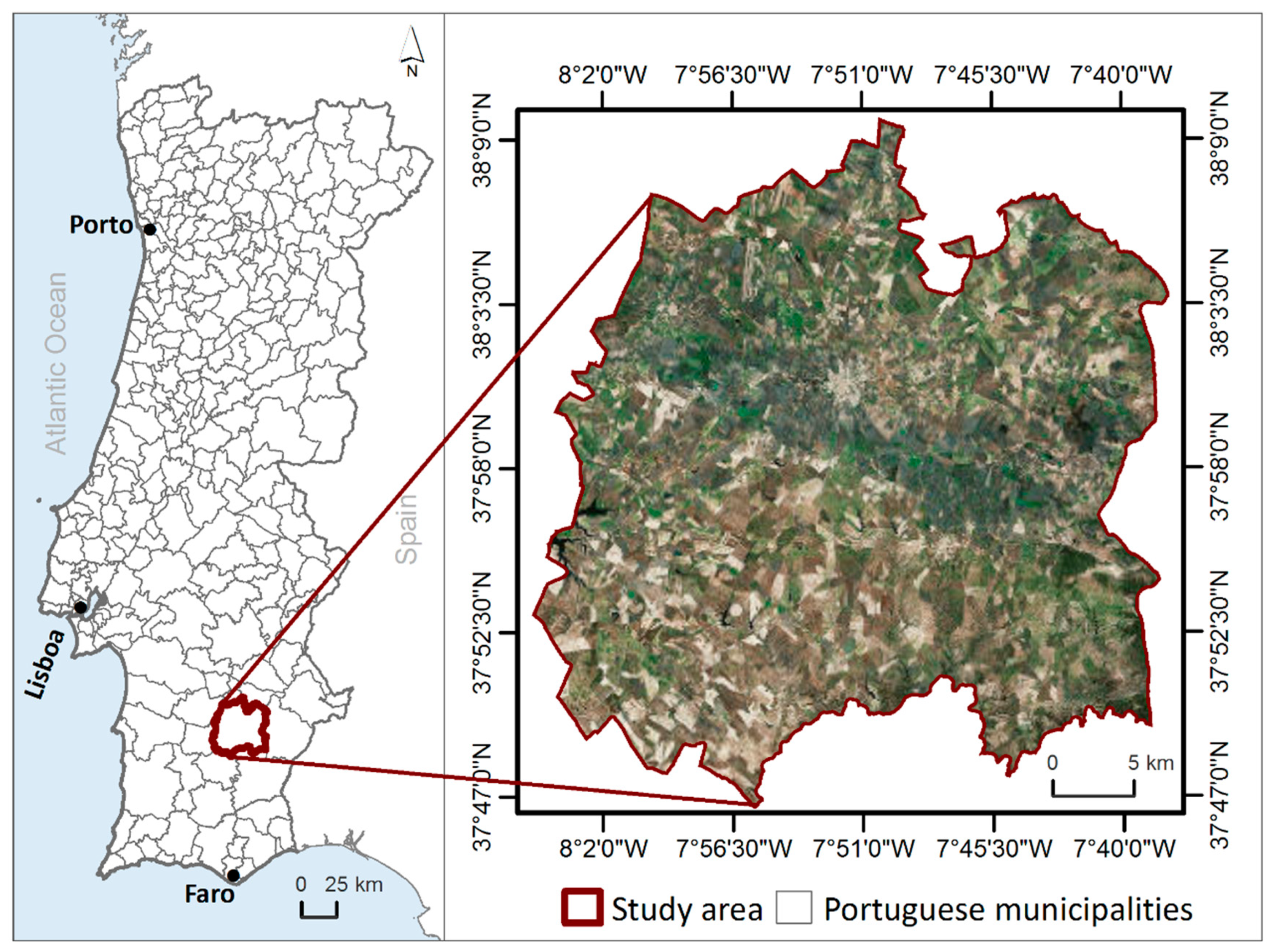
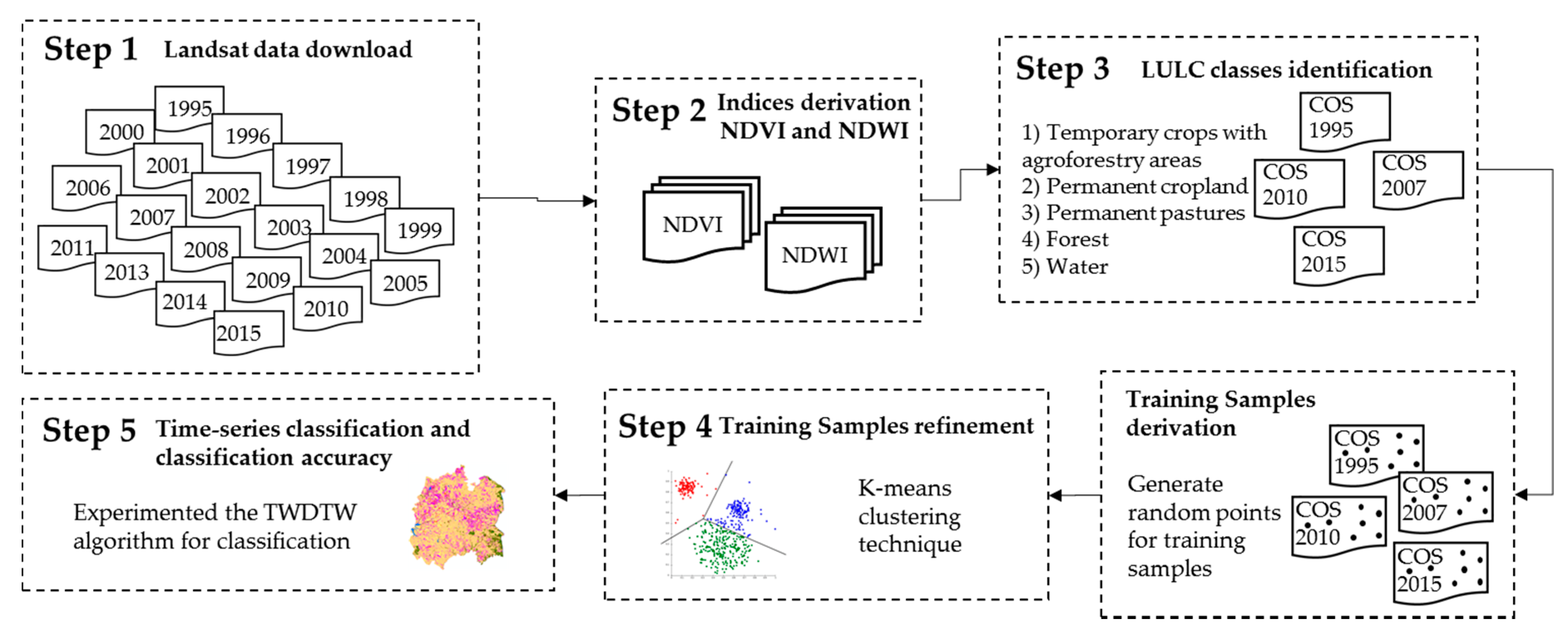
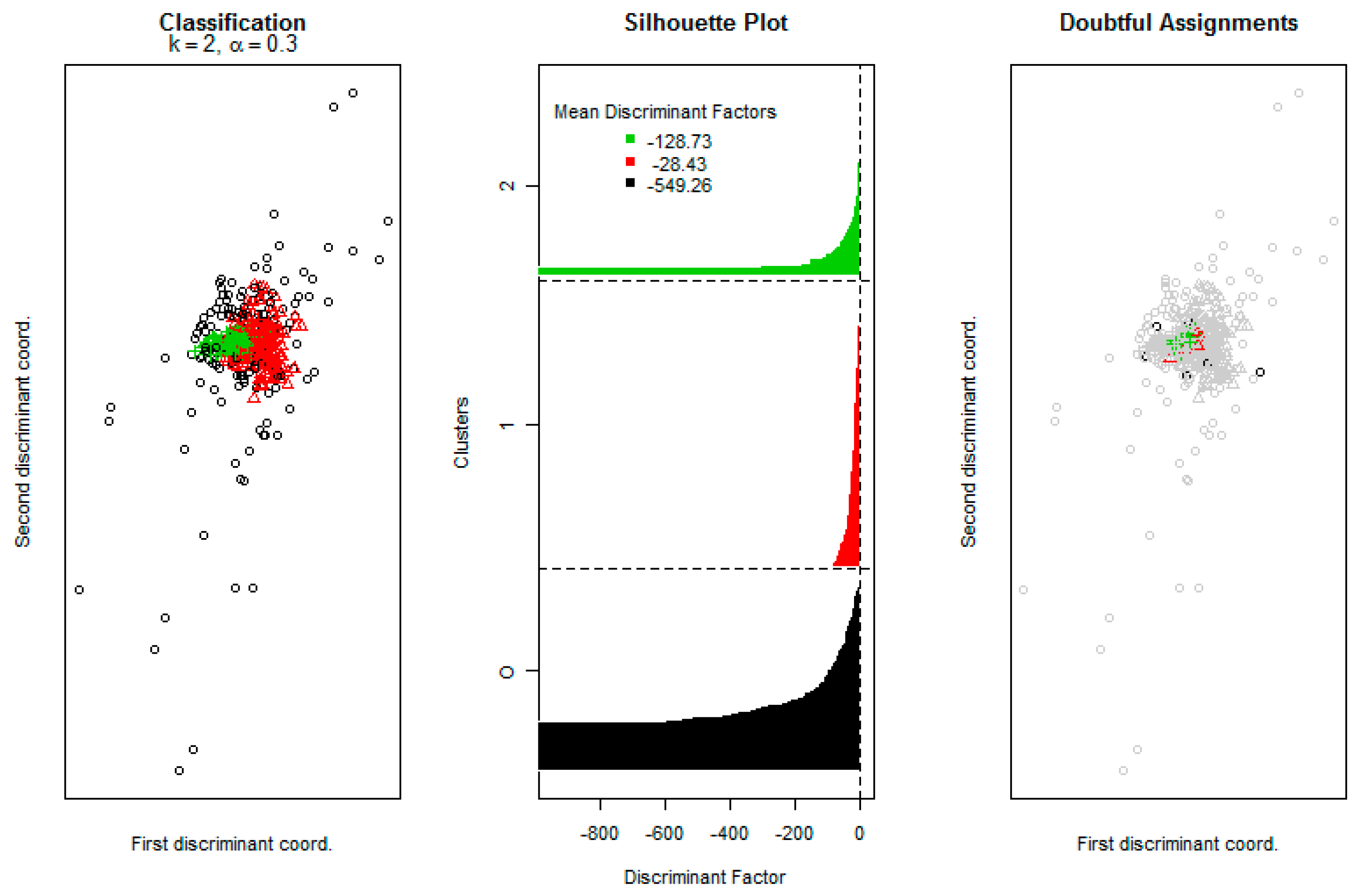
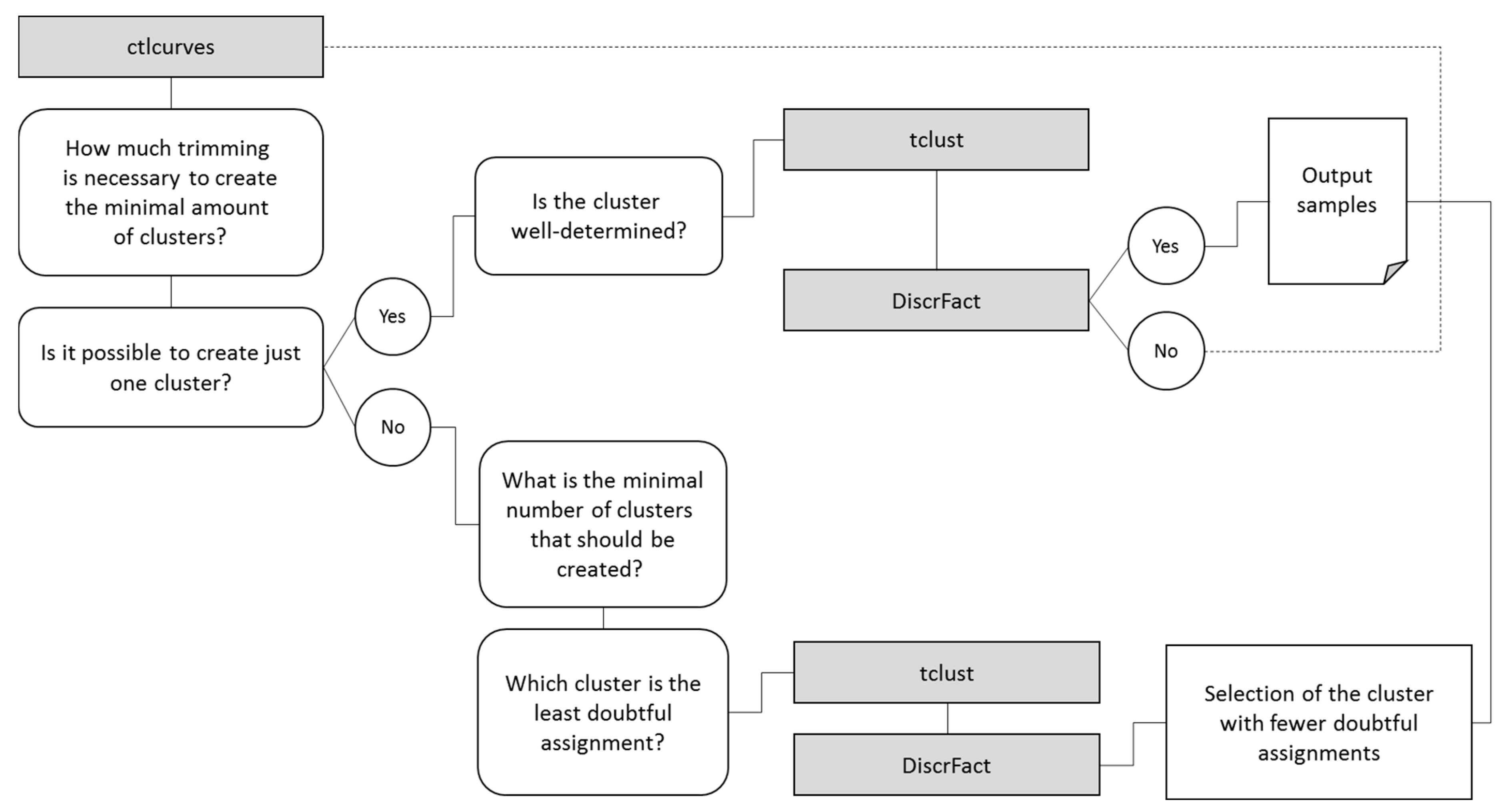
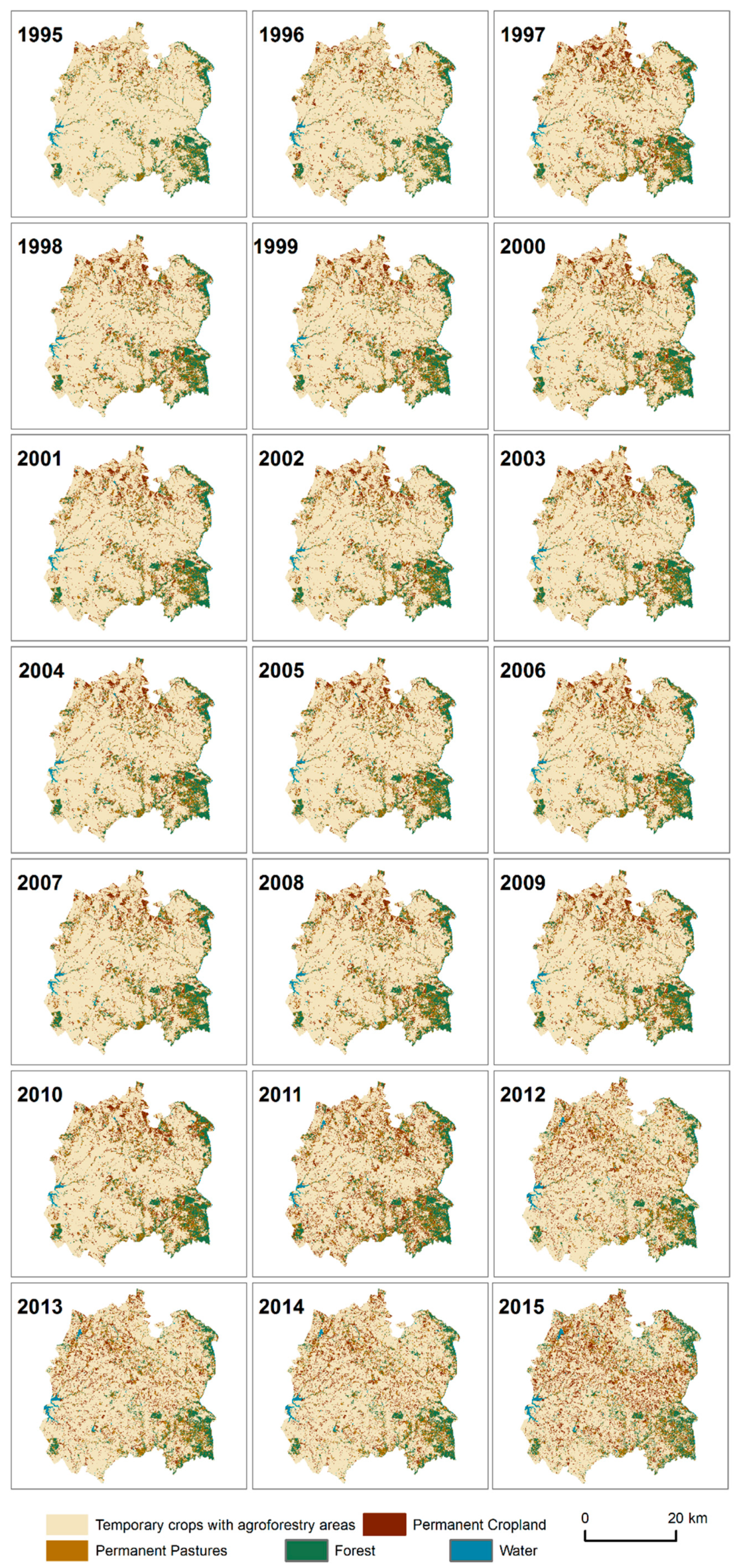
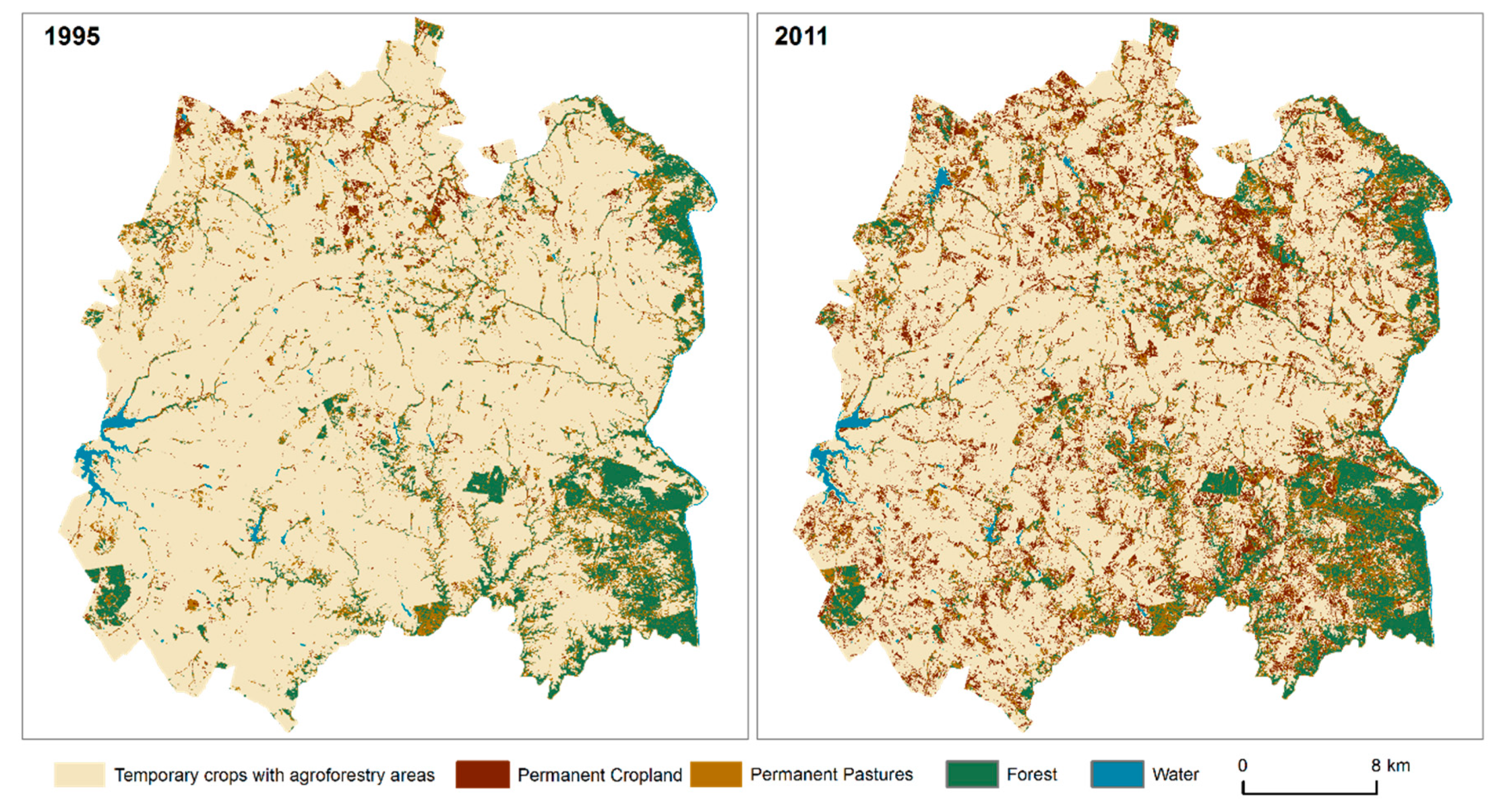
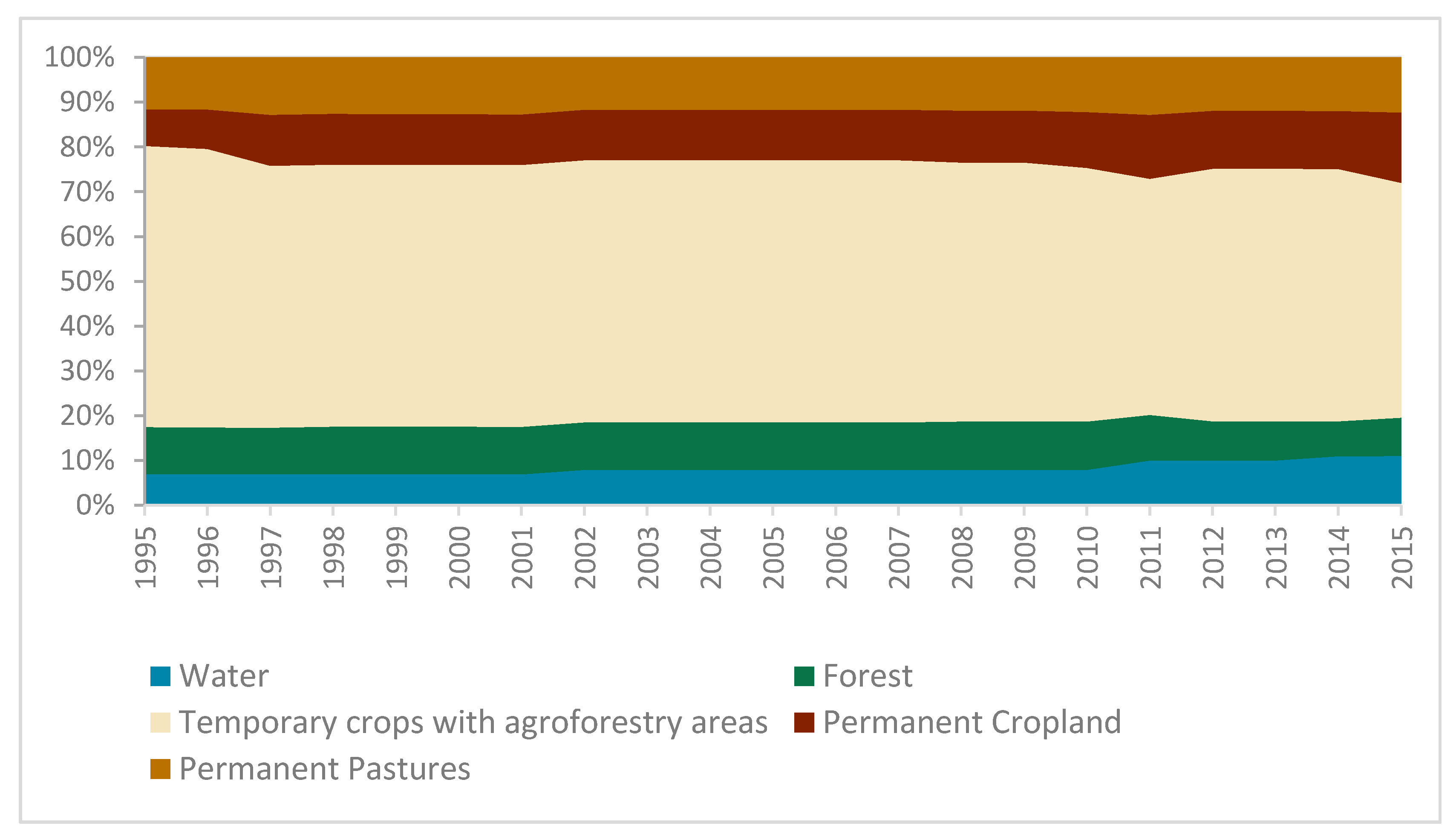
| Year | Number of Images | Year | Number of Images |
|---|---|---|---|
| 1995 | 14 | 2006 | 8 |
| 1996 | 8 | 2007 | 13 |
| 1997 | 13 | 2008 | 8 |
| 1998 | 15 | 2009 | 16 |
| 1999 | 12 | 2010 | 12 |
| 2000 | 10 | 2011 | 11 |
| 2001 | 12 | 2012 | 0 * |
| 2002 | 5 | 2013 | 8 |
| 2003 | 6 | 2014 | 14 |
| 2004 | 11 | 2015 | 17 |
| 2005 | 8 |
| Vegetation Index Name | Landsat 4-5 Images | Landsat 8 Images | Reference |
|---|---|---|---|
| NDVI | [44] | ||
| NDWI | [47] |
| Nomenclature Level 1 | Nomenclature Level 2 | Class Coverage (1995) | Class Coverage (2007) | Class Coverage (2010) | Class Coverage (2015) |
|---|---|---|---|---|---|
| 1. Artificial surfaces | 1.1. Urban fabric | 1.4% | 1.5% | 1.6% | 1.6% |
| 1.2. Industrial, commercial and transport units | |||||
| 1.3. Mine, dump and construction sites | |||||
| 1.4 Artificial, non-agricultural vegetated areas | |||||
| 2. Agricultural areas | 2.1 Temporary crops | 51.1% | 42.8% | 42.6% | 42.5% |
| 2.2 Permanent crops | 5.7% | 9.1% | 11.9% | 13.1% | |
| 2.3 Pastures | 9.7% | 12.3% | 8.1% | 8.1% | |
| 2.4 Heterogeneous agricultural areas | 19.1% | 19.8% | 20.3% | 19.2% | |
| 3. Forest and semi natural areas | 3.1 Forests | 11.3% | 12.4% | 13.1% | 13.0% |
| 3.2 Scrub and/or herbaceous vegetation associations | |||||
| 3.3 Open spaces with little or no vegetation | |||||
| 4. Wetlands | 4.1 Inland wetlands | 0% | 0% | 0% | 0% |
| 4.2 Maritime wetlands | |||||
| 5. Water bodies | 5.1 Inland waters | 1.7% | 2.1% | 2.4% | 2.5% |
| 5.2 Marine waters | |||||
| Total | 100% | 100% | 100% | 100% | |
| LULC Class | COS Nomenclature Code | Description | Image Example | Field Example |
|---|---|---|---|---|
| Temporary crops with agroforestry areas | 2.1., 2.4.4 | Temporary crops (non-irrigated and permanently irrigated crops); complex cultivation patterns (herbaceous understory); land principally occupied by agriculture, with significant areas of natural vegetation; agroforestry areas. | 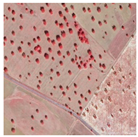 |  |
| Permanent cropland | 2.2. | Crops occupied the land for a long period and had a nonrotating regime (olive groves, vineyards) |  | 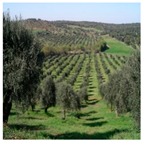 |
| Permanent pastures | 2.3. | Areas permanently occupied (≥5 years), with mainly herbaceous vegetation |  | 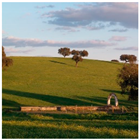 |
| Forest | 3.1., 3.2., 3.3 | Areas occupied by tree clusters resulting from natural regeneration or planting |  | 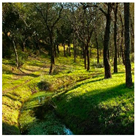 |
| Water | 5.1., 5.2. | Freshwater surfaces, including watercourses and water plans (both natural and artificial) |  | 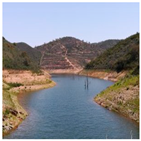 |
| LULC Class | ||||||
|---|---|---|---|---|---|---|
| Temporary Crops with Agroforestry Areas | Permanent Pastures | Permanent Cropland | Forest | Water | ||
| Number of training samples | 1995 | 1158 | 474 | 684 | 399 | 648 |
| 2007 | 1062 | 384 | 474 | 486 | 456 | |
| 2010 | 786 | 600 | 630 | 684 | 402 | |
| 2015 | 828 | 540 | 636 | 787 | 588 | |
| Reference Class | |||||||
|---|---|---|---|---|---|---|---|
| Map Class | Temporary Crops with Agroforestry Areas | Permanent Cropland | Permanent Pastures | Forest | Water | Total | User Accuracy ± Error Tolerance |
| Temporary crops with agroforestry areas | 9343 | 1726 | 1494 | 53 | 0 | 12616 | 74.06 ± 0.1% |
| Permanent cropland | 940 | 1338 | 4 | 108 | 0 | 2390 | 55.98 ± 0.3% |
| Permanent pastures | 395 | 10 | 958 | 87 | 0 | 1450 | 66.07 ± 0.4% |
| Forest | 24 | 19 | 22 | 1751 | 0 | 1823 | 96.42 ± 0.1% |
| Water | 0 | 0 | 0 | 7 | 2055 | 2055 | 99.66 ± 0.0% |
| Total | 10702 | 3093 | 2478 | 1999 | 2062 | 20334 | |
| Producer Accuracy ± Error tolerance | 87.30 ± 0.1% | 43.25 ± 0.3% | 38.66 ± 0.3% | 87.28 ± 0.2% | 100.0 ± 0.0% | ||
| Overall Accuracy | 75.96 ± 0.1% | ||||||
| Kappa index | 0.62 | ||||||
© 2019 by the authors. Licensee MDPI, Basel, Switzerland. This article is an open access article distributed under the terms and conditions of the Creative Commons Attribution (CC BY) license (http://creativecommons.org/licenses/by/4.0/).
Share and Cite
Viana, C.M.; Girão, I.; Rocha, J. Long-Term Satellite Image Time-Series for Land Use/Land Cover Change Detection Using Refined Open Source Data in a Rural Region. Remote Sens. 2019, 11, 1104. https://doi.org/10.3390/rs11091104
Viana CM, Girão I, Rocha J. Long-Term Satellite Image Time-Series for Land Use/Land Cover Change Detection Using Refined Open Source Data in a Rural Region. Remote Sensing. 2019; 11(9):1104. https://doi.org/10.3390/rs11091104
Chicago/Turabian StyleViana, Cláudia M., Inês Girão, and Jorge Rocha. 2019. "Long-Term Satellite Image Time-Series for Land Use/Land Cover Change Detection Using Refined Open Source Data in a Rural Region" Remote Sensing 11, no. 9: 1104. https://doi.org/10.3390/rs11091104
APA StyleViana, C. M., Girão, I., & Rocha, J. (2019). Long-Term Satellite Image Time-Series for Land Use/Land Cover Change Detection Using Refined Open Source Data in a Rural Region. Remote Sensing, 11(9), 1104. https://doi.org/10.3390/rs11091104






